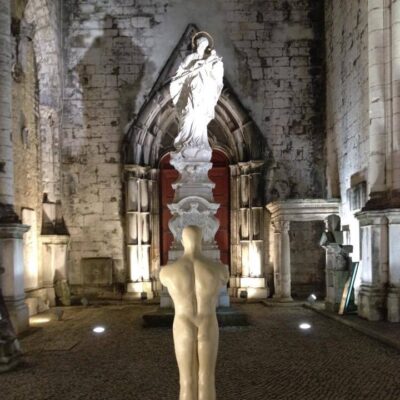Convento do Carmo
If surreal historic sceneries is what you crave for in your journeys then the ruins of Convento do Carmo is a place that will bewitch you with its grandeur, its massive size & craft & will astonish you by its gloomy current appearance.
This grand reminder of the disastrous earthquake of 1755 retains only its external Gothic walls & arches but not its roof. An element that can now be appreciated as romantic & admired as unique. A small archaeological museum can also be found at the apse of the church with historical objects like tombs, statues & south American mummies.



The Carmo Archaeological Museum, installed here, was founded in 1864 by the first president of the Association of Portuguese Archaeologists, Joaquim Possidónio Narciso da Silva (1806-1896).
It was the first art and archeology museum in the country, and was born from the purpose of safeguarding the national heritage that was deteriorating and deteriorating as a result of the extinction of the Religious Orders and the countless damages inflicted during the French Invasions and Liberal Wars.



In the first years of its existence, it gathered a collection consisting of numerous fragments of architecture and sculpture, as well as funerary monuments of great sculptural relief, tile panels, weapons stones, and many other objects of historical, artistic and archaeological interest.


At the end of the 19th century and in the third quarter of the 20th century, important art and archeology collections from different sources were brought into the Museum, among which the Roman epigraphy collection, the pre-Columbian ceramics and mummies collection and the original collection from the excavation of the Castro de Vila Nova de S. Pedro, in Azambuja (Chalcolithic c.3500 BC), currently with around a thousand artefacts on permanent display. More



